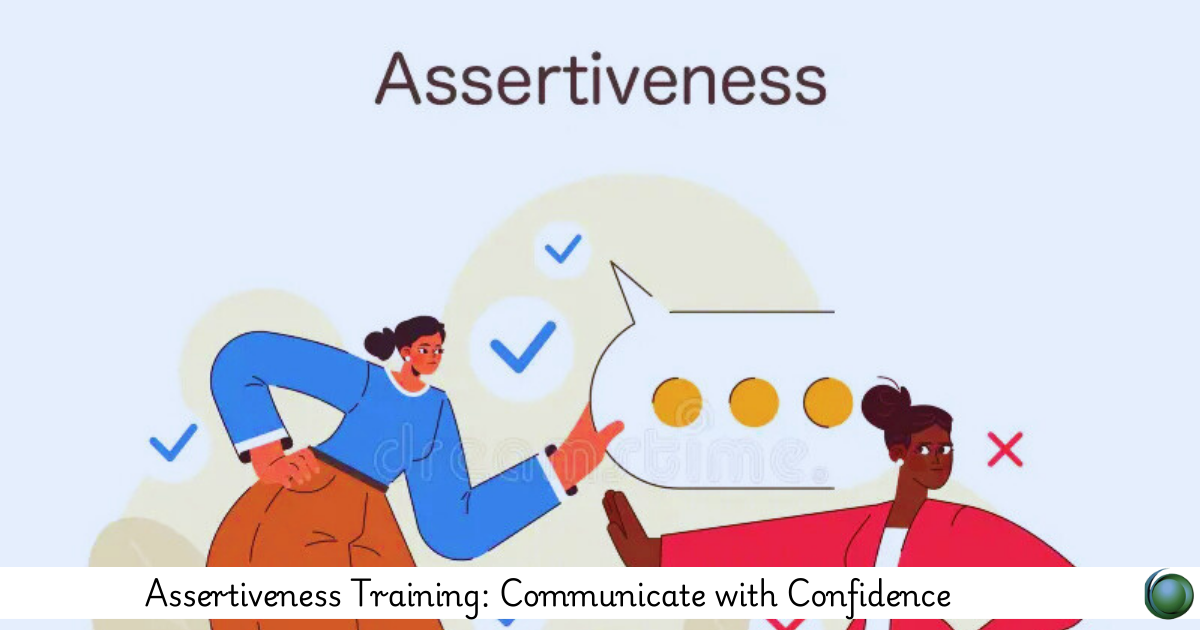Description
Introduction
Assertiveness is a key communication skill that allows professionals to express themselves clearly, respectfully, and confidently—without passivity or aggression. Assertiveness Training: Communicate with Confidence helps participants stand their ground, set boundaries, and improve interpersonal effectiveness across workplace situations.
Prerequisites
-
Basic interpersonal communication experience
-
Willingness to practice speaking up and receiving feedback
-
Interest in strengthening personal presence and influence
-
No prior assertiveness training required
Table of Contents
1. Understanding Assertiveness
1.1 Defining Assertiveness, Passivity, and Aggression
1.2 Benefits of Assertive Communication in the Workplace
1.3 Myths and Misconceptions About Being Assertive
1.4 The Rights and Responsibilities of Assertive Individuals
2. The Psychology of Assertiveness
2.1 Self-Esteem and Confidence as Foundations
2.2 Internal Barriers: Fear, Guilt, and Negative Self-Talk
2.3 Recognizing Power Dynamics in Conversations
2.4 Building a Growth Mindset for Communication
3. Verbal Assertiveness Techniques
3.1 Using “I” Statements to Express Needs
3.2 Saying No Without Feeling Guilty
3.3 Giving and Receiving Constructive Feedback
3.4 Disagreeing Politely and Professionally
4. Non-Verbal Assertiveness
4.1 Confident Body Language and Eye Contact
4.2 Tone of Voice and Pace of Speaking
4.3 Aligning Verbal and Non-Verbal Cues
4.4 Managing Reactions and Staying Grounded
5. Assertiveness in Difficult Conversations
5.1 Handling Criticism with Poise
5.2 Confronting Disrespect or Boundary Violations
5.3 Navigating Emotionally Charged Situations
5.4 Staying Assertive Under Pressure
6. Assertiveness in Team and Leadership Roles
6.1 Speaking Up in Meetings and Group Settings
6.2 Delegating Tasks Clearly and Fairly
6.3 Leading Assertively Without Dominating
6.4 Balancing Authority and Approachability
7. Setting and Communicating Boundaries
7.1 Recognizing When Boundaries Are Needed
7.2 Assertive Scripts for Common Scenarios
7.3 Dealing with Pushback Gracefully
7.4 Reinforcing Boundaries Consistently
8. Assertiveness Across Cultures and Contexts
8.1 Cultural Norms and Communication Styles
8.2 Adjusting Assertiveness in Global Environments
8.3 Avoiding Miscommunication and Offense
8.4 Being Respectfully Direct Across Differences
9. Practicing Assertiveness Skills
9.1 Role-Plays and Real-Life Scenarios
9.2 Feedback and Self-Reflection Exercises
9.3 Building Confidence Through Repetition
9.4 Tracking Progress and Growth Over Time
10. Creating an Assertive Communication Plan
10.1 Identifying Key Personal Challenges
10.2 Setting Assertiveness Goals
10.3 Integrating Assertiveness into Daily Interactions
10.4 Sustaining Assertiveness Through Self-Care and Support
Assertiveness is not about being forceful—it’s about being clear, respectful, and confident. This course empowers you to communicate with conviction, protect your time and energy, and cultivate healthier, more productive relationships at work and beyond.







Reviews
There are no reviews yet.